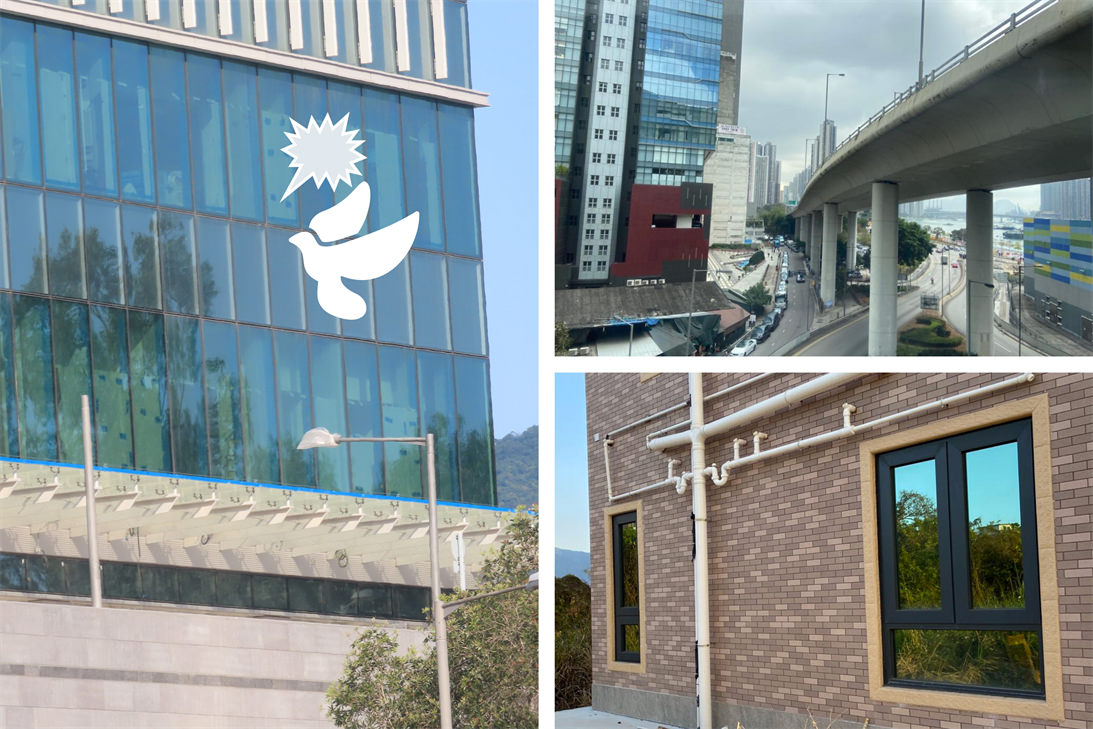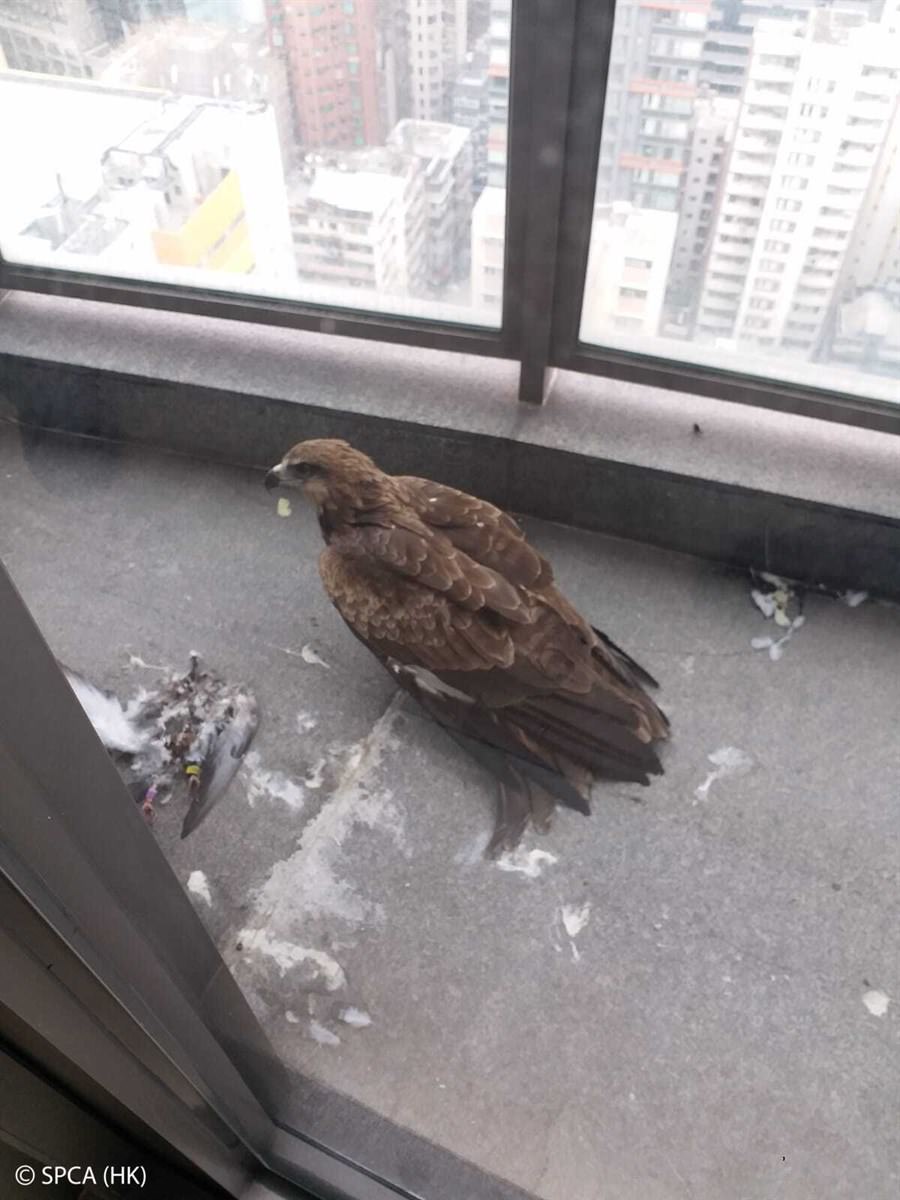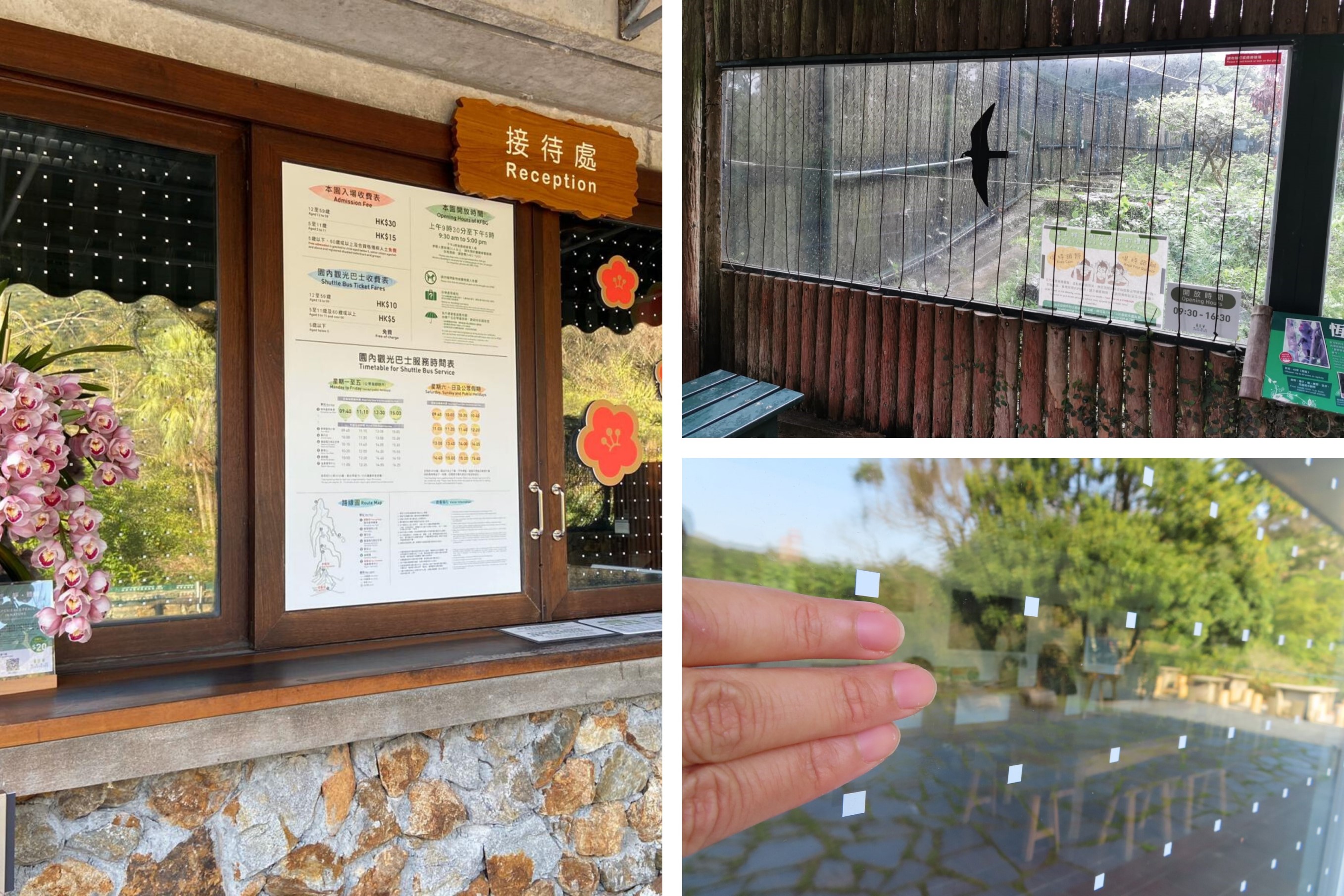Window Strikes by Birds and What You Can Do to Prevent Them
The sky used to be the realm of birds, but as we developed the skills and technologies to build skyscrapers, our living space has merged with the world of the feathered creatures. In an attempt to ‘blend in’, increasingly more high-rise architecture includes mirror-like surfaces, camouflaging the solid building by reflecting the sky and the clouds. This creates a problem which is detrimental to birds, taking away thousands of avian lives every year globally. And this is happening right here in Hong Kong. The problem also occurs in migratory bats that are probably confused by the star-like light reflected from the towers at night.

▲KFBG Wild Animal Rescue Centre has received many birds that were injured after colliding with windows or mirrored glass. (Photo Credit: KFBG)
In January this year, a male Black Kite (Milvus migrans) and dead Rock Dove (Columba livia) were found on a balcony situated on the 33rd floor of a building in Jordan. The two birds were victims of a window collision accident. It was suspected that the dove flew into the balcony window, mistaking it as an escape way while being pursued by the kite. While escaping from the pursuing Kite, it flew right into this invisible grave. Some dove species can fly up to 88.5 km per hour, close to the top speed on Hong Kong highways. It is not hard to imagine the fatal impact received by the dove when stopped suddenly at this speed. The Kite, luckily, pulled back just in time only to find himself trapped behind the tall glass balcony front.

▲A Black Kite and the dead Rock Dove, a victim of a window strike
(Photo Credit: SPCA)
Such collisions could have been avoided if the windows were made more visible to the birds using simple available devices. The reflection of the nearby habitat on the windows makes it difficult for the flying birds to detect the hard surface. To warn them, we simply need to break the reflection up by regular intervals of 5cm using strings, stickers, tapes or paint that the birds can see. Products such as Acopian BirdSaver (a string device) and Window Alert Decals (UV-reflecting stickers) have been used widely in zoos and households to reduce window strike cases. Thanks to the special physiology of avian eyes, these products are obvious to birds but less noticeable to humans.
The risk of window strike is not confined to cities, it also exists in rural areas where glass surface creates an image of the forest and the sky. Upon receiving reports of bird-strikes at KFBG, mitigations have been designed and implemented to minimise the chance of recurrence. Stickers and decorations are used at the reception area, Art House, Monkey Haven and Mishas Bungalow. We hope to demonstrate the effectiveness of these preventative devices and encourage the community and developers to construct bird-friendly environments. Please contact the Fauna Conservation Department at fauna@kfbg.org for advice on anti-bird strike designs.

▲From left clockwise: Bird friendly designs at the Reception, Monkey Haven and Art House at KFBG. (Photo Credit: KFBG)
So what happened to the lucky male Kite? After a veterinary health check, followed by rehabilitation at the Wild Animal Rescue Centre of KFBG, the Kite was released on Kwun Yum Shan. Let’s hope that luck stays on his side and environmental awareness takes off like the recovered bird.

